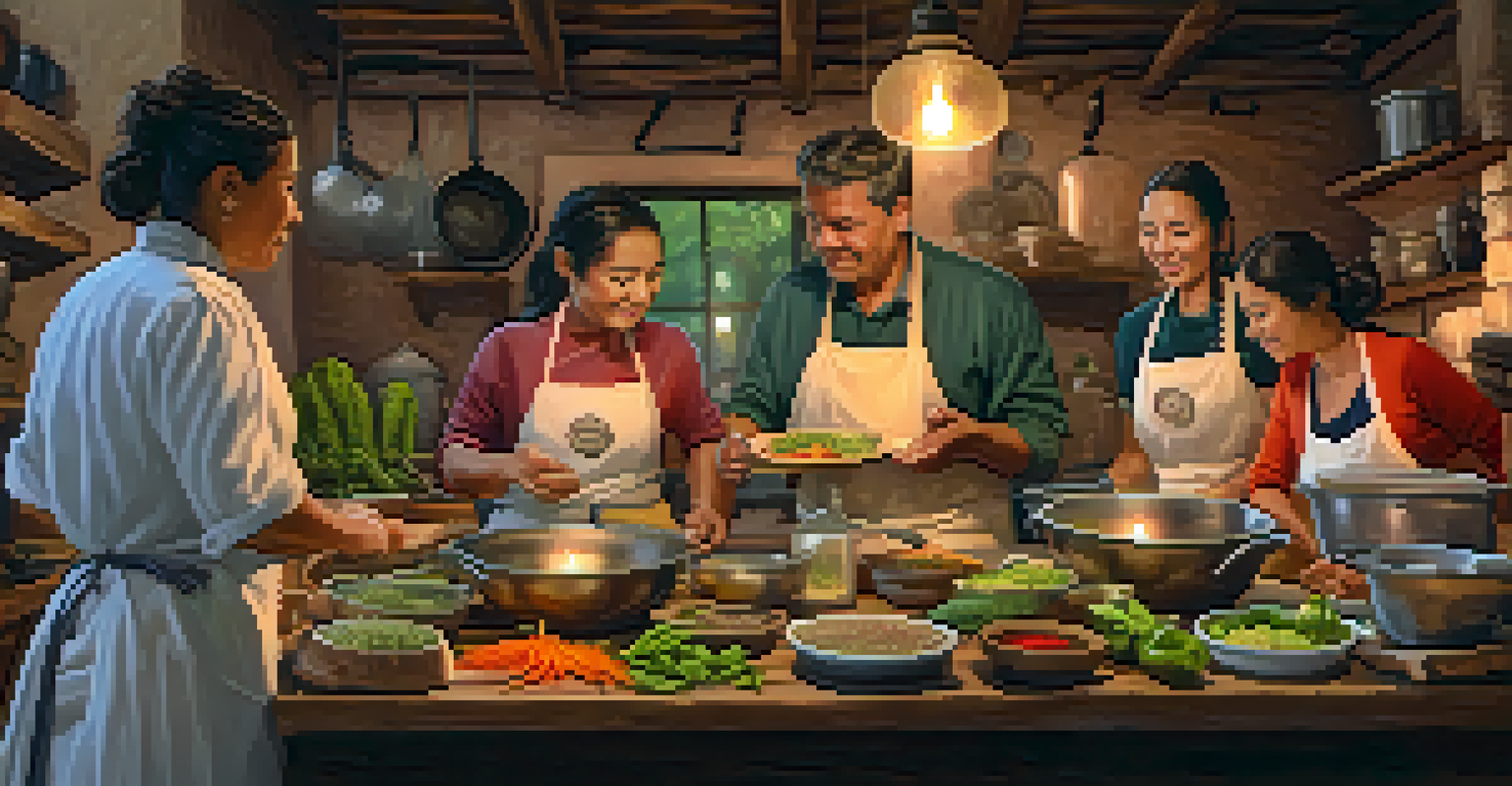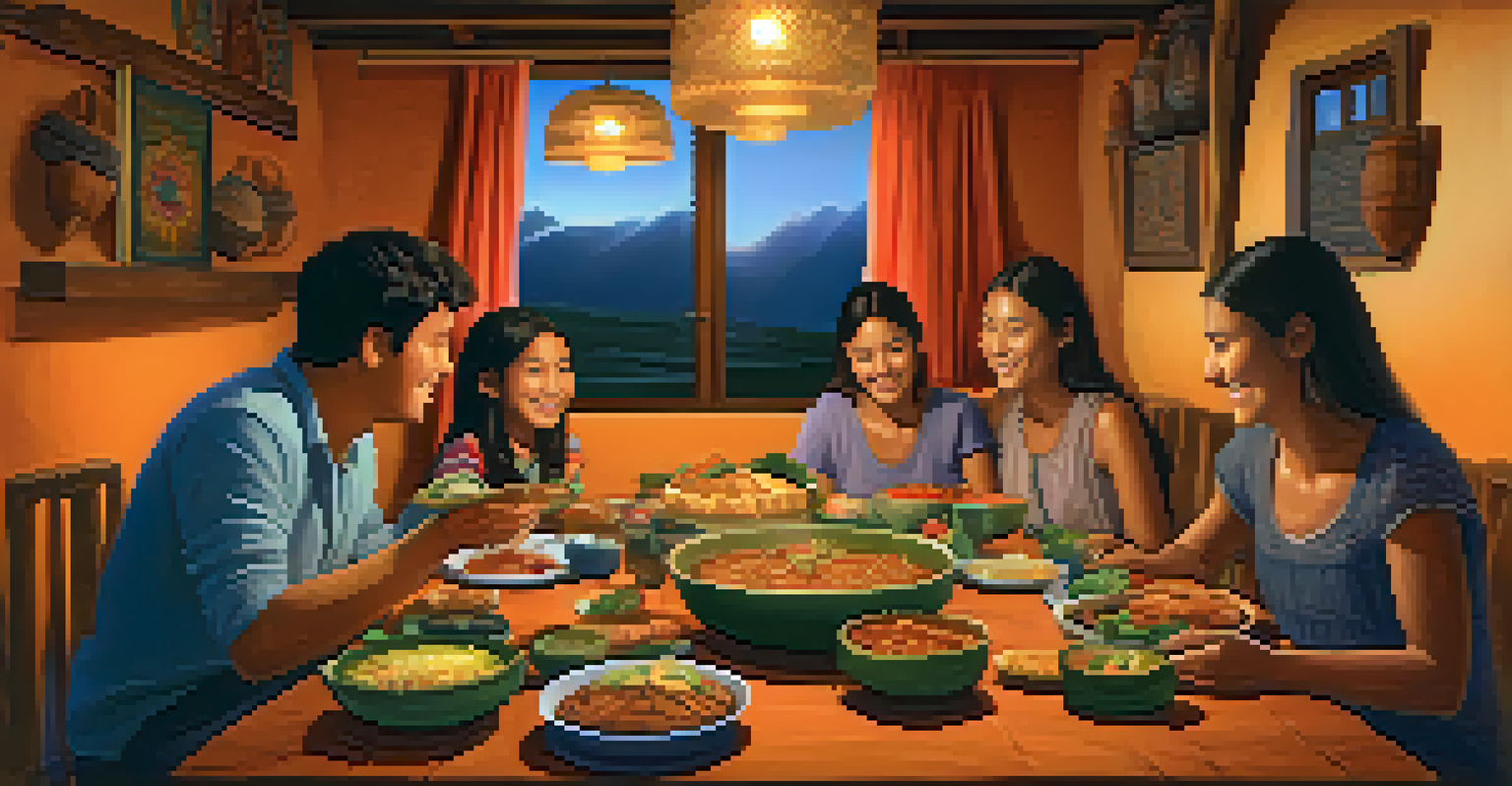Peru's Unique Programs for Tourist-Local Cultural Exchange

What is Cultural Exchange in Tourism?
Cultural exchange in tourism refers to the mutual sharing of customs, traditions, and experiences between visitors and locals. It's a way for travelers to immerse themselves in the local culture, creating meaningful connections that go beyond typical sightseeing. This interaction enriches the travel experience, allowing tourists to understand the essence of a place through its people.
Traveling – it leaves you speechless, then turns you into a storyteller.
In Peru, this concept is especially prevalent, as the country boasts a rich tapestry of cultures, languages, and traditions. From the vibrant Incan history to the diverse Amazonian tribes, tourists can engage with a variety of cultural practices. Such exchanges not only benefit visitors, but they also provide locals with opportunities to share their heritage, fostering pride and awareness.
Through these interactions, both tourists and locals can learn from each other, breaking down stereotypes and building friendships. The result is a more personal travel experience, where the memories created are often more valuable than any souvenir.
Volunteer Programs: A Hands-On Approach
One of the most impactful ways tourists can engage in cultural exchange is through volunteer programs. Organizations across Peru offer opportunities for travelers to contribute to local communities, whether through teaching English, supporting conservation efforts, or working in community development. These programs allow tourists to work side by side with locals, creating a deeper understanding of their daily lives.

For example, a tourist volunteering in a rural school may learn firsthand about the educational challenges faced by local children. This experience fosters empathy and a deeper appreciation for the efforts of educators in Peru. Such interactions often lead to lasting friendships, as volunteers share meals, stories, and laughter with their host families.
Cultural Exchange Enriches Travel
Cultural exchange in tourism fosters meaningful connections between visitors and locals, enhancing the travel experience.
Moreover, by participating in volunteer programs, tourists can help address specific needs within the community. This not only enhances the visitor's experience but also ensures that their contributions are meaningful and appreciated.
Culinary Experiences: Taste of Peru
Peru's culinary scene is a delicious gateway to cultural exchange, showcasing a blend of indigenous ingredients and international influences. Tourists can take cooking classes that teach traditional recipes while learning about the history behind each dish. This hands-on experience allows visitors to savor the flavors of Peru while engaging with local chefs and families.
The world is a book, and those who do not travel read only one page.
Imagine kneading dough for a traditional Peruvian bread while listening to stories about its significance in local festivals. Such experiences not only tantalize the taste buds but also deepen the connection to Peruvian culture. Sharing meals prepared together fosters community and warmth, as food is often at the heart of cultural traditions.
Through these culinary adventures, tourists gain insight into the importance of food in Peruvian society, from celebrations to everyday life. This shared experience often leads to discussions about family, heritage, and the diverse regions of Peru, making every meal a story worth telling.
Art and Craft Workshops: Creativity Unleashed
Art and craft workshops in Peru provide tourists with an opportunity to learn traditional skills from local artisans. These hands-on sessions often cover techniques like pottery, weaving, or painting, allowing visitors to create their own masterpieces. As they work alongside skilled craftspeople, tourists gain insight into the cultural significance of each art form.
For instance, a workshop focused on Andean weaving can reveal the intricate patterns that tell stories of the region's history. Participants not only leave with a tangible keepsake but also a deeper respect for the craftsmanship involved. This interaction encourages conversations about the cultural heritage of the artisans and the challenges they face in a modern economy.
Volunteer Programs Foster Understanding
Participating in volunteer programs allows tourists to engage deeply with local communities, creating lasting bonds and mutual respect.
By engaging with local artists, tourists also support the preservation of traditional crafts, ensuring these skills are passed down through generations. This exchange promotes sustainability and appreciation for the arts, enriching the travel experience for everyone involved.
Home Stays: Living Like a Local
Staying with a local family through home stay programs offers tourists an authentic glimpse into daily life in Peru. This immersive experience allows visitors to share meals, participate in family activities, and learn about local customs firsthand. It's a unique opportunity to step away from the tourist trail and truly connect with the community.
Imagine gathering around the dinner table, sharing stories and laughter while enjoying a home-cooked meal. Such moments foster a sense of belonging and create lasting memories. Home stays also help locals share their culture, traditions, and values in a personal and meaningful way.
Through these exchanges, tourists often leave with a newfound appreciation for the simplicity and richness of local life. The relationships formed during home stays can last long after the trip ends, highlighting the profound impact of cultural exchange.
Cultural Festivals: Celebrating Together
Cultural festivals in Peru are vibrant celebrations that invite tourists to participate in local traditions. Events such as Inti Raymi, the Festival of the Sun, or the Feast of Corpus Christi showcase the rich heritage of the country and provide a platform for cultural exchange. Tourists can join in the festivities, experiencing music, dance, and food that reflect the region's history.
Participating in these celebrations allows visitors to witness the passion and pride of local communities. Whether it's dancing in the streets or sharing traditional dishes, the energy of festivals creates a sense of unity among participants. Tourists often find themselves swept up in the joy of the moment, making the experience unforgettable.
Sustainable Practices Benefit All
Sustainable tourism in Peru supports local economies while preserving cultural heritage, creating a win-win scenario for both tourists and residents.
These festivals also serve as a reminder of the importance of preserving cultural traditions. Through the involvement of tourists, communities can share their heritage while fostering understanding and appreciation among diverse cultures.
Sustainable Tourism: A Win-Win for Locals and Visitors
Sustainable tourism practices in Peru prioritize the needs of local communities while enhancing the travel experience for visitors. By focusing on the preservation of cultural heritage and the environment, these initiatives ensure that tourism benefits everyone involved. Tourists can engage in activities that support local economies while respecting cultural traditions.
For example, choosing to participate in eco-tourism ventures or supporting local artisans helps to sustain livelihoods without compromising the integrity of the culture. This approach encourages travelers to make conscious decisions, reflecting their values while exploring a new destination.

Ultimately, sustainable tourism fosters a sense of responsibility among tourists, promoting awareness of their impact on the places they visit. By prioritizing cultural exchange and sustainability, Peru sets a stunning example of how tourism can enrich both lives and communities.